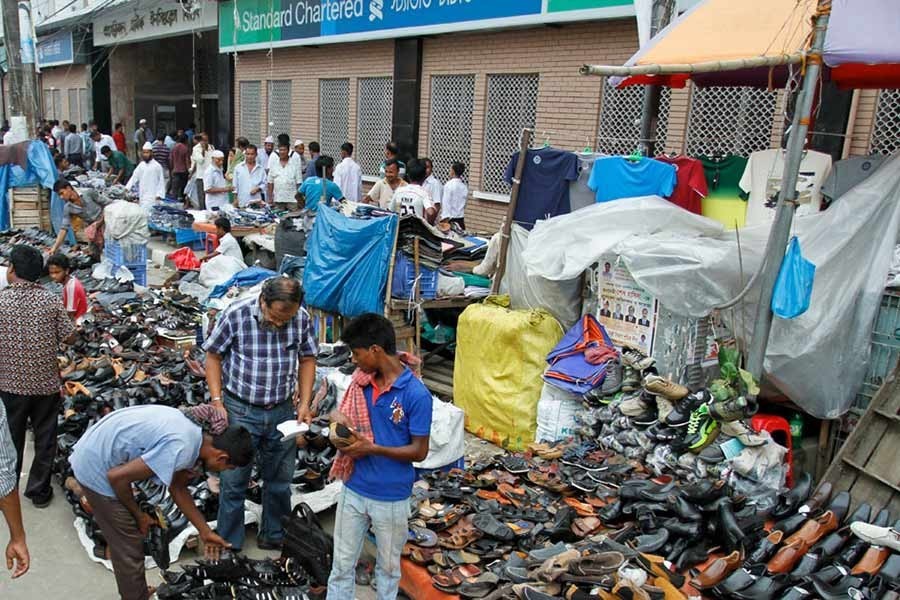Almost all the cities in Bangladesh are rapidly becoming unfriendly towards pedestrians. Dhaka and other big cities have already allowed motor vehicles to rule the roads. The chaos on the roads of Dhaka thanks to unruly motor vehicles couple with poor traffic management makes the situation worse. So, it is not surprising that there is hardly any room for pedestrians in the capital city, in major parts of the city to be precise.
Footpaths or walkways are largely vanishing from the capital city of the country which is posting 7-plus economic growth annually. At least 45 new private cars are pressed into service daily in Dhaka. A number of flyovers have already been constructed in the city to provide space for cars and other motor vehicles. More ambitious and costly projects like Bus Rapid Transit (BRT) and Elevated Express Way (EEW) are now underway.
To accommodate these infrastructures, the authorities have cut direct access of pedestrians in many places and ultimately increased the distances for commuters. Increased distance makes commuting costly and time-consuming. To overcome the unwanted trouble, some commuters encourage non-motorised vehicles to take wrong or opposite direction on roads violating the traffic rules. It adds to further unruliness in the streets.
At the same time existing walkways and pavements are mostly occupied by street vendors, parked vehicles and dustbins. Motorcyclists shamelessly infringe on footpaths and take up pedestrians' space. With all such encumbrances, pedestrians are compelled to risk their lives and share roads with cars, buses, motorcycles, auto rickshaws and rickshaws. They are in constant fear of being mowed down by speeding motor vehicles. It also causes mental stresses to pedestrians. The condition is worse for children, senior citizens and physically challenged people.
Policymakers and traffic polices complain that pedestrians become jaywalkers in Dhaka. They also allege that jaywalking makes traffic management difficult. It is a big problem, no doubt, and shows that pedestrians pay little heed to traffic rules. Yet a major reason for jaywalking is the failure of the authorities to provide adequate walkways and smooth road crossing facilities.
Unfortunately, instead of acknowledging the failure, the authorities continue to blame jaywalkers. Even to penalise them, a number of mobile courts were initiated earlier. The purpose of the drive was to compel pedestrians to use narrow and badly designed foot-over bridges. Zebra crossing is the best option and effort should be there to ensure proper use of zebra crossing by pedestrians. Establishing strategic crossing points with proper signboards to sensitise pedestrians and motorists will be more effective than foot over-bridges. These bridges are difficult to ascend by elderly people, women and children. Underpass may be an alternative but it is more costly.
Narrowing walk spaces for pedestrians along with inadequate and indecent public transports make the mobility of people difficult and hazardous. The policy to encourage private motorised vehicles, be it passenger cars or motorcycles, is adding to environmental pollutions. Moreover it is gradually distorting traditional social bonds. Failure to accommodate those on foot also suggests an insensitive attitude towards mass people. Everyone seems to forget the fact that every journey starts and finishes on foot.


